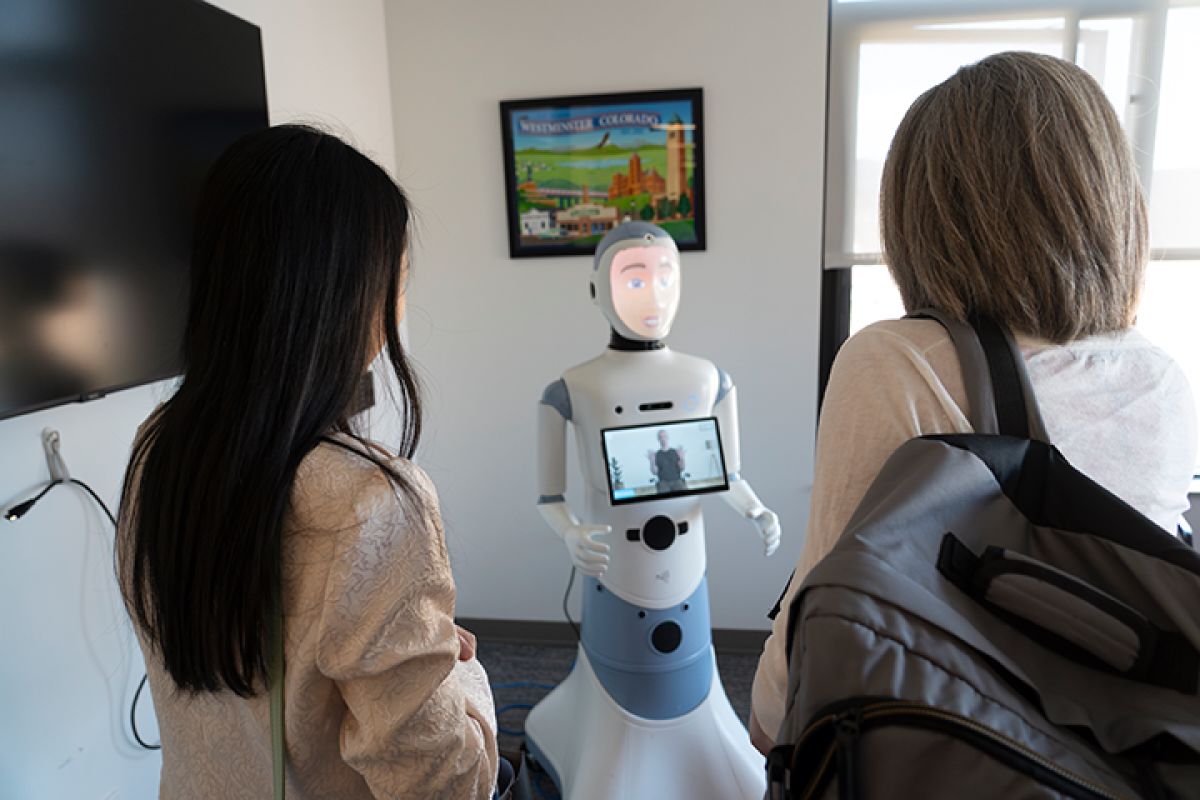Marketing Meets Science
Students in the Professional MBA program get real-world experience helping an engineering professor market a social robot that helps children with autism.

Students in the Daniels College of Business are no strangers to using case studies to learn, but Michael Myers, associate teaching professor and academic director of the MBA program, decided to take it a step further: Why not give students the chance to collaborate with DU researchers on marketing real-world products created right here on campus?
For students Jacquelin Lalor and Ashley Hill in the Professional Master of Business Administration (PMBA) program, that led to working with Mohammad Mahoor, professor of electrical and computer engineering in the Ritchie School of Engineering and Computer Science, to help market a robot he developed to improve the social behaviors of children with autism spectrum disorders.

Much of Mahoor’s research focuses on computer vision, machine learning and algorithm development with the goal of building social robots that can socially interact with humans and enhance their lives in a variety of ways. Previously, Mahoor and his fellow researchers developed Ryan, a companion robot designed to assist patients with Alzheimer’s.
When Myers partnered with Mahoor to bring the project into his classroom, it immediately drew the attention of Hill and Lalor, who said it was a “perfect fit” for their interests. Lalor, who has a background in school nursing, was drawn to the child health aspect, and Hill, who is also assistant director of Equity Labs in the Graduate School of Social Work, has a background in accessibility and inclusion.

The two started their marketing plan by researching the existing market, competing products and potential demand for their product. They spent much of their time researching the target audience—because, as Hill says, the user “drives everything.”
In this case, she adds, balancing the needs of a multi-faceted user base with those of the client was a challenge, but Hill enjoyed trying to “home in on what was important to users” while also making sure they kept in mind the relationship between the user and the researchers—and gave them something to build on.
They also had to educate themselves about the product and the science behind it so that they could distill the complex information into something more practical and engaging for their audience. “It’s a project that I could have worked on for months,” says Lalor. “But we had to focus on what was being asked of us and rely on the subject-matter experts to get the project finished.”

It was also exciting to have the opportunity to do real, meaningful work with researchers on campus, Lalor says. “We do a lot of case studies, but this is personal. We met these people; we know what their work is—that’s very different than reading and responding to a case study.”
The two got to see up close what is meant by doing research for the public good. “They want to help people and do research that is meaningful, important and generative. They’re looking for a better future. It was really refreshing and inspiring for me to be in conversation with this internal team and with Dr. Mahoor’s folks and to know that that alignment is out there,” Hill says.
Myers says the project is part of a push to provide students opportunities to work with intellectual property and gain valuable, real-world skills and knowledge, which he says is crucial for preparing students for their careers. “In the business school, we fight to bring reality in—because abstraction doesn’t help,” he says.
Myers is looking for more opportunities across campus for these types of experiences. “The buffet is open. We would like [faculty] to bring in their projects—and we will help you execute them,” he says. “If you have a need, I’ve got a small army of brilliant students who will do great work.”